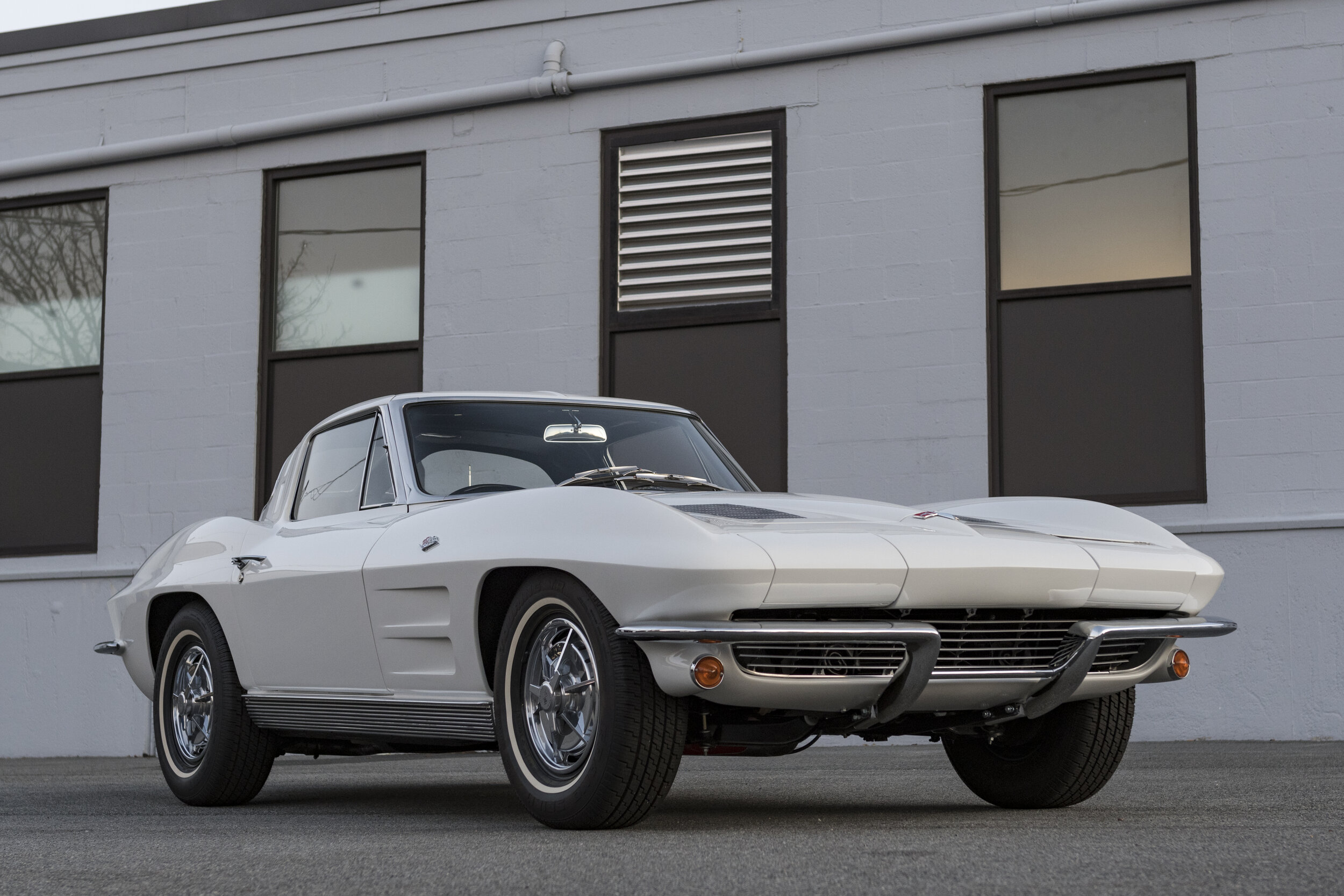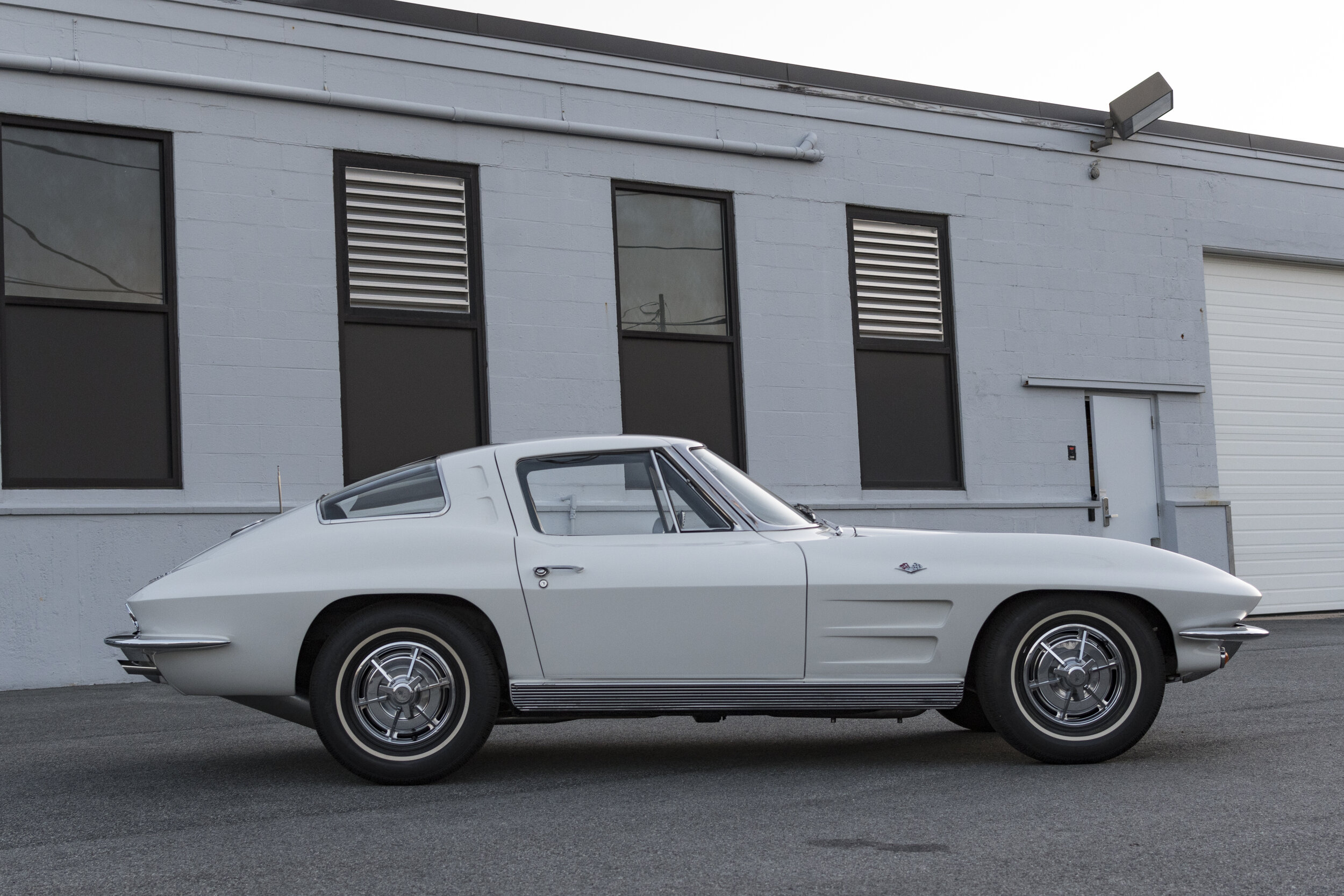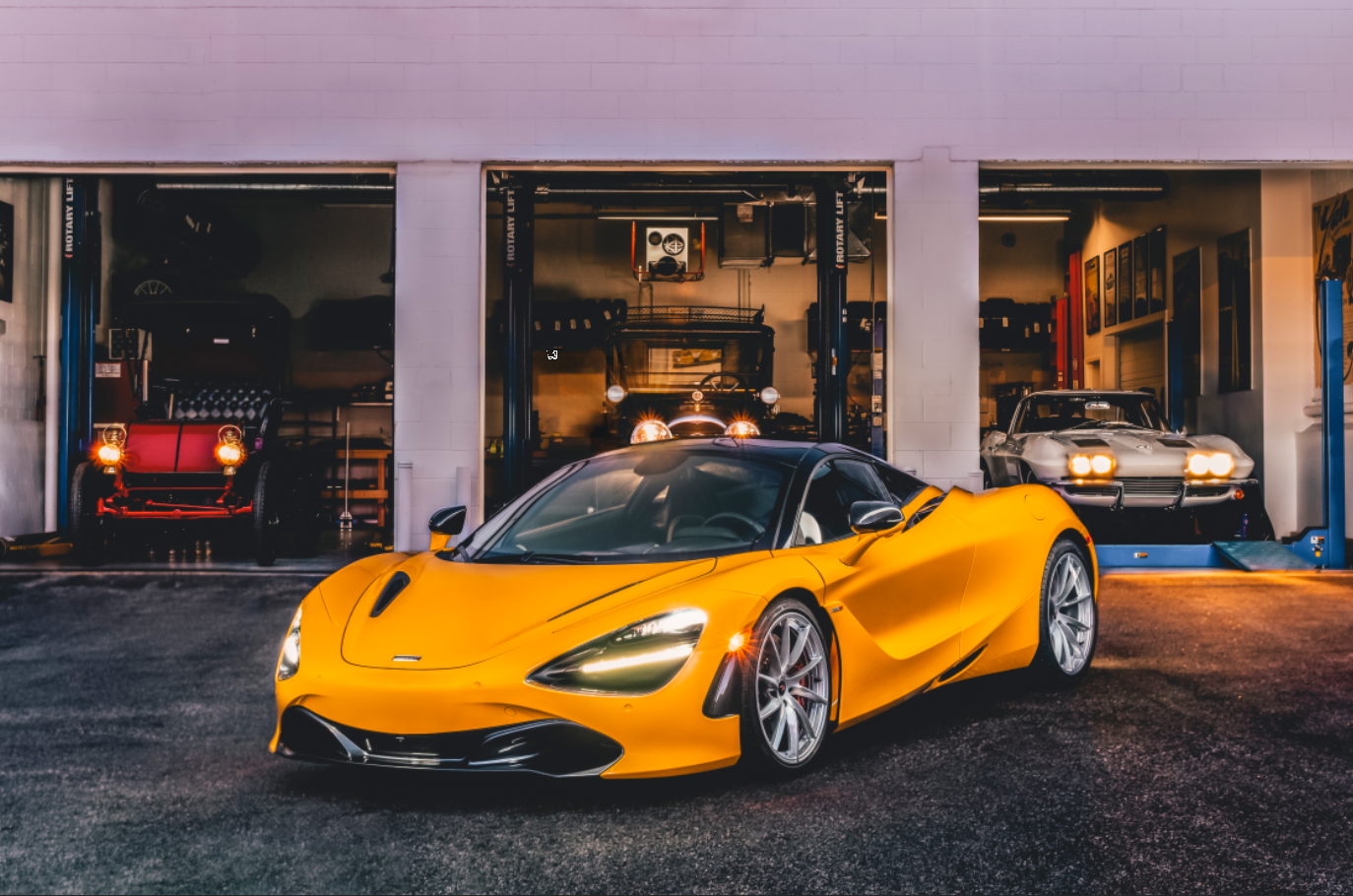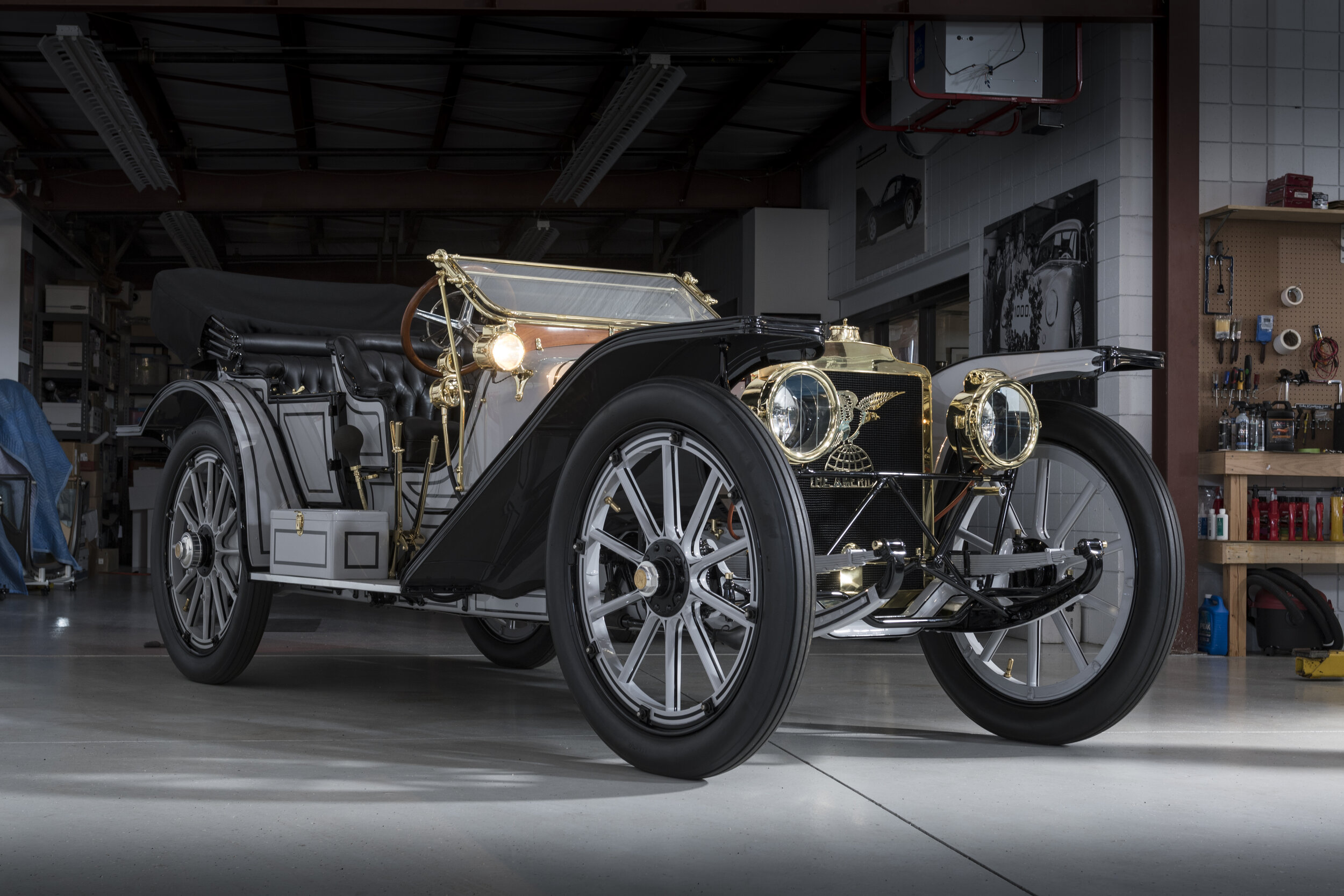1963 Chevrolet Corvette



Lights: Vacuum-Controlled Hidden Revolving Headlights
Since the 1930’s, GM Design had a fascination with hidden headlights. The world’s first concept car, the 1938 Buick Y-Job, featured hideaway headlights, as did the later Le Sabre and Cyclone concepts - GM’s way of incorporating a subtle but advanced design feature to change the look of the front of the car. The first car to use hidden headlights was the 1936 Cord 810, designed by Gordon Buehrig who worked at GM under Harley Earl.
Quad headlights were an attractive trend in the late 1950’s and early 1960’s, and with a twist, they were retained from the first generation of Corvette. The newest generation of Corvette was the first American car equipped with hidden headlights since the 1942 DeSoto. The vacuum controlled lamps were mounted in rotating housings that blended with the sharp-edged front end when closed. Hidden headlamps would be a feature of the Corvette until the C6 model debuted in 2005.
Ask an automobile enthusiast about the 1963 Corvette coupe, and it won’t take long for them to explain why it is perhaps the most iconic and influential Corvette of all time. A single-year split-window design and less than 20k original miles make this matching numbers Corvette one of the most significant examples in existence.
With Harley Earl’s appointment as head of the Art & Colour section at General Motors in 1927, the company was a step ahead of the competition. The 1930’s saw fantastic designs and engineering advances out of GM, though all production shifted in the late 1930’s to assist in the United States war effort. So much of life was unpredictable at the beginning of World War II, and many Americans had little sense of how much their lives were about to change. GIs returned home to their families in the States when fighting concluded, with many of them now familiar with European car culture.
Earl witnessed these GIs driving flashy two-seater Jaguars, MGs, and Alfa Romeos during the post war period. GM did not offer a small sports car for young buyers, and Earl knew this needed to change. In late 1951, the Special Projects crew at GM began secretly developing EX-122 - the prototype which led to the first Corvette.
When the first generation Corvette appeared in the GM Motorama tour in 1953, racer and engineer Zora Arkus-Duntov saw the Corvette in person, subsequently writing a letter to GM with specific plans on how to make the Corvette a globally competitive car. He was hired by GM within a few months, marking the first step towards turning the Corvette into a household name.
Development began in the late 1950’s for the second generation Corvette, with many of the engineering developments stemming from Duntov’s mid-engine experimental sports car projects. The first models rolled off the line in 1963 with a few revolutionary design features, the first of which was the raised wind split that ran the length of the roof, continuing down the back of the car through the rear window. Bill Mitchell is credited for this now-iconic design element, claiming to draw inspiration from the Bugatti Type 57SC. While the design was incredibly stylish, it was expensive to produce and hindered the driver’s view through the rear view window, and the split window design was discontinued after 1963.
Specifications
Engine: 5.4L Fuel Injected V8 (327 C.I.)
Horsepower: 360 @ 6000 RPM
Torque: 352 ft./lbs. @ 4000 RPM
0-60 MPH: 6.1 Seconds
Top Speed: 142 MPH
Weight: 3362 lbs
Lights: Vacuum-Controlled Hidden Revolving Headlights


















